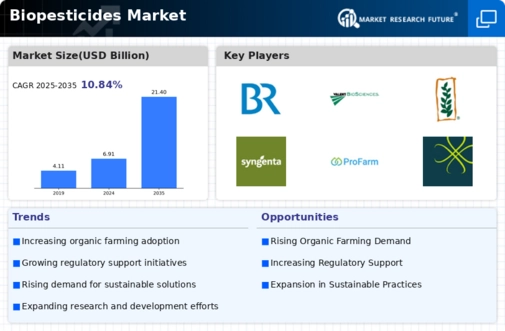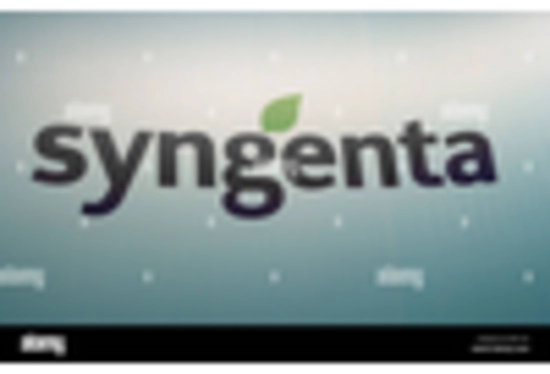-
EXECUTIVE SUMMARY
-
Market Overview
-
Key Findings
-
Market Segmentation
-
Competitive Landscape
-
Challenges and Opportunities
-
Future Outlook
-
MARKET INTRODUCTION
-
Definition
-
Scope of the study
- Research Objective
- Assumption
- Limitations
-
RESEARCH METHODOLOGY
-
Overview
-
Data Mining
-
Secondary Research
-
Primary Research
- Primary Interviews and Information Gathering Process
- Breakdown of Primary Respondents
-
Forecasting Model
-
Market Size Estimation
- Bottom-Up Approach
- Top-Down Approach
-
Data Triangulation
-
Validation
-
MARKET DYNAMICS
-
Overview
-
Drivers
-
Restraints
-
Opportunities
-
MARKET FACTOR ANALYSIS
-
Value chain Analysis
-
Porter's Five Forces Analysis
- Bargaining Power of Suppliers
- Bargaining Power of Buyers
- Threat of New Entrants
- Threat of Substitutes
- Intensity of Rivalry
-
COVID-19 Impact Analysis
- Market Impact Analysis
- Regional Impact
- Opportunity and Threat Analysis
-
BIOPESTICIDES MARKET, BY TYPE (USD BILLION)
-
Bioherbicide
-
Bioinsecticide
-
Bio Fungicide
-
BIOPESTICIDES MARKET, BY FORM (USD BILLION)
-
Liquid
-
Dry
-
BIOPESTICIDES MARKET, BY APPLICATION (USD BILLION)
-
Soil
-
Foliar
-
Seed
-
BIOPESTICIDES MARKET, BY CROP (USD BILLION)
-
Grain
-
Cereal
-
Oilseeds
-
Fruits
-
Vegetables
-
BIOPESTICIDES MARKET, BY REGIONAL (USD BILLION)
-
North America
- US
- Canada
-
Europe
- Germany
- UK
- France
- Russia
- Italy
- Spain
- Rest of Europe
-
APAC
- China
- India
- Japan
- South Korea
- Malaysia
- Thailand
- Indonesia
- Rest of APAC
-
South America
- Brazil
- Mexico
- Argentina
- Rest of South America
-
MEA
- GCC Countries
- South Africa
- Rest of MEA
-
COMPETITIVE LANDSCAPE
-
Overview
-
Competitive Analysis
-
Market share Analysis
-
Major Growth Strategy in the Biopesticides Market
-
Competitive Benchmarking
-
Leading Players in Terms of Number of Developments in the Biopesticides Market
-
Key developments and growth strategies
- New Product Launch/Service Deployment
- Merger & Acquisitions
- Joint Ventures
-
Major Players Financial Matrix
- Sales and Operating Income
- Major Players R&D Expenditure. 2023
-
COMPANY PROFILES
-
Bayer
- Financial Overview
- Products Offered
- Key Developments
- SWOT Analysis
- Key Strategies
-
Antony Wood
- Financial Overview
- Products Offered
- Key Developments
- SWOT Analysis
- Key Strategies
-
Valent BioSciences
- Financial Overview
- Products Offered
- Key Developments
- SWOT Analysis
- Key Strategies
-
Monsanto
- Financial Overview
- Products Offered
- Key Developments
- SWOT Analysis
- Key Strategies
-
Syngenta
- Financial Overview
- Products Offered
- Key Developments
- SWOT Analysis
- Key Strategies
-
Marrone Bio Innovations
- Financial Overview
- Products Offered
- Key Developments
- SWOT Analysis
- Key Strategies
-
Biological Control
- Financial Overview
- Products Offered
- Key Developments
- SWOT Analysis
- Key Strategies
-
Koppert Biological Systems
- Financial Overview
- Products Offered
- Key Developments
- SWOT Analysis
- Key Strategies
-
Novozymes
- Financial Overview
- Products Offered
- Key Developments
- SWOT Analysis
- Key Strategies
-
BASF
- Financial Overview
- Products Offered
- Key Developments
- SWOT Analysis
- Key Strategies
-
AgriLife
- Financial Overview
- Products Offered
- Key Developments
- SWOT Analysis
- Key Strategies
-
Certis USA
- Financial Overview
- Products Offered
- Key Developments
- SWOT Analysis
- Key Strategies
-
FMC Corporation
- Financial Overview
- Products Offered
- Key Developments
- SWOT Analysis
- Key Strategies
-
UPL
- Financial Overview
- Products Offered
- Key Developments
- SWOT Analysis
- Key Strategies
-
Dow
- Financial Overview
- Products Offered
- Key Developments
- SWOT Analysis
- Key Strategies
-
APPENDIX
-
References
-
Related Reports
-
LIST OF TABLES
-
\r\n
-
LIST OF ASSUMPTIONS
-
NORTH AMERICA BIOPESTICIDES MARKET SIZE ESTIMATES & FORECAST, BY TYPE, 2019-2035 (USD BILLIONS)
-
NORTH AMERICA BIOPESTICIDES MARKET SIZE ESTIMATES & FORECAST, BY FORM, 2019-2035 (USD BILLIONS)
-
NORTH AMERICA BIOPESTICIDES MARKET SIZE ESTIMATES & FORECAST, BY APPLICATION, 2019-2035 (USD BILLIONS)
-
NORTH AMERICA BIOPESTICIDES MARKET SIZE ESTIMATES & FORECAST, BY CROP, 2019-2035 (USD BILLIONS)
-
NORTH AMERICA BIOPESTICIDES MARKET SIZE ESTIMATES & FORECAST, BY REGIONAL, 2019-2035 (USD BILLIONS)
-
US BIOPESTICIDES MARKET SIZE ESTIMATES & FORECAST, BY TYPE, 2019-2035 (USD BILLIONS)
-
US BIOPESTICIDES MARKET SIZE ESTIMATES & FORECAST, BY FORM, 2019-2035 (USD BILLIONS)
-
US BIOPESTICIDES MARKET SIZE ESTIMATES & FORECAST, BY APPLICATION, 2019-2035 (USD BILLIONS)
-
US BIOPESTICIDES MARKET SIZE ESTIMATES & FORECAST, BY CROP, 2019-2035 (USD BILLIONS)
-
US BIOPESTICIDES MARKET SIZE ESTIMATES & FORECAST, BY REGIONAL, 2019-2035 (USD BILLIONS)
-
CANADA BIOPESTICIDES MARKET SIZE ESTIMATES & FORECAST, BY TYPE, 2019-2035 (USD BILLIONS)
-
CANADA BIOPESTICIDES MARKET SIZE ESTIMATES & FORECAST, BY FORM, 2019-2035 (USD BILLIONS)
-
CANADA BIOPESTICIDES MARKET SIZE ESTIMATES & FORECAST, BY APPLICATION, 2019-2035 (USD BILLIONS)
-
CANADA BIOPESTICIDES MARKET SIZE ESTIMATES & FORECAST, BY CROP, 2019-2035 (USD BILLIONS)
-
CANADA BIOPESTICIDES MARKET SIZE ESTIMATES & FORECAST, BY REGIONAL, 2019-2035 (USD BILLIONS)
-
EUROPE BIOPESTICIDES MARKET SIZE ESTIMATES & FORECAST, BY TYPE, 2019-2035 (USD BILLIONS)
-
EUROPE BIOPESTICIDES MARKET SIZE ESTIMATES & FORECAST, BY FORM, 2019-2035 (USD BILLIONS)
-
EUROPE BIOPESTICIDES MARKET SIZE ESTIMATES & FORECAST, BY APPLICATION, 2019-2035 (USD BILLIONS)
-
EUROPE BIOPESTICIDES MARKET SIZE ESTIMATES & FORECAST, BY CROP, 2019-2035 (USD BILLIONS)
-
EUROPE BIOPESTICIDES MARKET SIZE ESTIMATES & FORECAST, BY REGIONAL, 2019-2035 (USD BILLIONS)
-
GERMANY BIOPESTICIDES MARKET SIZE ESTIMATES & FORECAST, BY TYPE, 2019-2035 (USD BILLIONS)
-
GERMANY BIOPESTICIDES MARKET SIZE ESTIMATES & FORECAST, BY FORM, 2019-2035 (USD BILLIONS)
-
GERMANY BIOPESTICIDES MARKET SIZE ESTIMATES & FORECAST, BY APPLICATION, 2019-2035 (USD BILLIONS)
-
GERMANY BIOPESTICIDES MARKET SIZE ESTIMATES & FORECAST, BY CROP, 2019-2035 (USD BILLIONS)
-
GERMANY BIOPESTICIDES MARKET SIZE ESTIMATES & FORECAST, BY REGIONAL, 2019-2035 (USD BILLIONS)
-
UK BIOPESTICIDES MARKET SIZE ESTIMATES & FORECAST, BY TYPE, 2019-2035 (USD BILLIONS)
-
UK BIOPESTICIDES MARKET SIZE ESTIMATES & FORECAST, BY FORM, 2019-2035 (USD BILLIONS)
-
UK BIOPESTICIDES MARKET SIZE ESTIMATES & FORECAST, BY APPLICATION, 2019-2035 (USD BILLIONS)
-
UK BIOPESTICIDES MARKET SIZE ESTIMATES & FORECAST, BY CROP, 2019-2035 (USD BILLIONS)
-
UK BIOPESTICIDES MARKET SIZE ESTIMATES & FORECAST, BY REGIONAL, 2019-2035 (USD BILLIONS)
-
FRANCE BIOPESTICIDES MARKET SIZE ESTIMATES & FORECAST, BY TYPE, 2019-2035 (USD BILLIONS)
-
FRANCE BIOPESTICIDES MARKET SIZE ESTIMATES & FORECAST, BY FORM, 2019-2035 (USD BILLIONS)
-
FRANCE BIOPESTICIDES MARKET SIZE ESTIMATES & FORECAST, BY APPLICATION, 2019-2035 (USD BILLIONS)
-
FRANCE BIOPESTICIDES MARKET SIZE ESTIMATES & FORECAST, BY CROP, 2019-2035 (USD BILLIONS)
-
FRANCE BIOPESTICIDES MARKET SIZE ESTIMATES & FORECAST, BY REGIONAL, 2019-2035 (USD BILLIONS)
-
RUSSIA BIOPESTICIDES MARKET SIZE ESTIMATES & FORECAST, BY TYPE, 2019-2035 (USD BILLIONS)
-
RUSSIA BIOPESTICIDES MARKET SIZE ESTIMATES & FORECAST, BY FORM, 2019-2035 (USD BILLIONS)
-
RUSSIA BIOPESTICIDES MARKET SIZE ESTIMATES & FORECAST, BY APPLICATION, 2019-2035 (USD BILLIONS)
-
RUSSIA BIOPESTICIDES MARKET SIZE ESTIMATES & FORECAST, BY CROP, 2019-2035 (USD BILLIONS)
-
RUSSIA BIOPESTICIDES MARKET SIZE ESTIMATES & FORECAST, BY REGIONAL, 2019-2035 (USD BILLIONS)
-
ITALY BIOPESTICIDES MARKET SIZE ESTIMATES & FORECAST, BY TYPE, 2019-2035 (USD BILLIONS)
-
ITALY BIOPESTICIDES MARKET SIZE ESTIMATES & FORECAST, BY FORM, 2019-2035 (USD BILLIONS)
-
ITALY BIOPESTICIDES MARKET SIZE ESTIMATES & FORECAST, BY APPLICATION, 2019-2035 (USD BILLIONS)
-
ITALY BIOPESTICIDES MARKET SIZE ESTIMATES & FORECAST, BY CROP, 2019-2035 (USD BILLIONS)
-
ITALY BIOPESTICIDES MARKET SIZE ESTIMATES & FORECAST, BY REGIONAL, 2019-2035 (USD BILLIONS)
-
SPAIN BIOPESTICIDES MARKET SIZE ESTIMATES & FORECAST, BY TYPE, 2019-2035 (USD BILLIONS)
-
SPAIN BIOPESTICIDES MARKET SIZE ESTIMATES & FORECAST, BY FORM, 2019-2035 (USD BILLIONS)
-
SPAIN BIOPESTICIDES MARKET SIZE ESTIMATES & FORECAST, BY APPLICATION, 2019-2035 (USD BILLIONS)
-
SPAIN BIOPESTICIDES MARKET SIZE ESTIMATES & FORECAST, BY CROP, 2019-2035 (USD BILLIONS)
-
SPAIN BIOPESTICIDES MARKET SIZE ESTIMATES & FORECAST, BY REGIONAL, 2019-2035 (USD BILLIONS)
-
REST OF EUROPE BIOPESTICIDES MARKET SIZE ESTIMATES & FORECAST, BY TYPE, 2019-2035 (USD BILLIONS)
-
REST OF EUROPE BIOPESTICIDES MARKET SIZE ESTIMATES & FORECAST, BY FORM, 2019-2035 (USD BILLIONS)
-
REST OF EUROPE BIOPESTICIDES MARKET SIZE ESTIMATES & FORECAST, BY APPLICATION, 2019-2035 (USD BILLIONS)
-
REST OF EUROPE BIOPESTICIDES MARKET SIZE ESTIMATES & FORECAST, BY CROP, 2019-2035 (USD BILLIONS)
-
REST OF EUROPE BIOPESTICIDES MARKET SIZE ESTIMATES & FORECAST, BY REGIONAL, 2019-2035 (USD BILLIONS)
-
APAC BIOPESTICIDES MARKET SIZE ESTIMATES & FORECAST, BY TYPE, 2019-2035 (USD BILLIONS)
-
APAC BIOPESTICIDES MARKET SIZE ESTIMATES & FORECAST, BY FORM, 2019-2035 (USD BILLIONS)
-
APAC BIOPESTICIDES MARKET SIZE ESTIMATES & FORECAST, BY APPLICATION, 2019-2035 (USD BILLIONS)
-
APAC BIOPESTICIDES MARKET SIZE ESTIMATES & FORECAST, BY CROP, 2019-2035 (USD BILLIONS)
-
APAC BIOPESTICIDES MARKET SIZE ESTIMATES & FORECAST, BY REGIONAL, 2019-2035 (USD BILLIONS)
-
CHINA BIOPESTICIDES MARKET SIZE ESTIMATES & FORECAST, BY TYPE, 2019-2035 (USD BILLIONS)
-
CHINA BIOPESTICIDES MARKET SIZE ESTIMATES & FORECAST, BY FORM, 2019-2035 (USD BILLIONS)
-
CHINA BIOPESTICIDES MARKET SIZE ESTIMATES & FORECAST, BY APPLICATION, 2019-2035 (USD BILLIONS)
-
CHINA BIOPESTICIDES MARKET SIZE ESTIMATES & FORECAST, BY CROP, 2019-2035 (USD BILLIONS)
-
CHINA BIOPESTICIDES MARKET SIZE ESTIMATES & FORECAST, BY REGIONAL, 2019-2035 (USD BILLIONS)
-
INDIA BIOPESTICIDES MARKET SIZE ESTIMATES & FORECAST, BY TYPE, 2019-2035 (USD BILLIONS)
-
INDIA BIOPESTICIDES MARKET SIZE ESTIMATES & FORECAST, BY FORM, 2019-2035 (USD BILLIONS)
-
INDIA BIOPESTICIDES MARKET SIZE ESTIMATES & FORECAST, BY APPLICATION, 2019-2035 (USD BILLIONS)
-
INDIA BIOPESTICIDES MARKET SIZE ESTIMATES & FORECAST, BY CROP, 2019-2035 (USD BILLIONS)
-
INDIA BIOPESTICIDES MARKET SIZE ESTIMATES & FORECAST, BY REGIONAL, 2019-2035 (USD BILLIONS)
-
JAPAN BIOPESTICIDES MARKET SIZE ESTIMATES & FORECAST, BY TYPE, 2019-2035 (USD BILLIONS)
-
JAPAN BIOPESTICIDES MARKET SIZE ESTIMATES & FORECAST, BY FORM, 2019-2035 (USD BILLIONS)
-
JAPAN BIOPESTICIDES MARKET SIZE ESTIMATES & FORECAST, BY APPLICATION, 2019-2035 (USD BILLIONS)
-
JAPAN BIOPESTICIDES MARKET SIZE ESTIMATES & FORECAST, BY CROP, 2019-2035 (USD BILLIONS)
-
JAPAN BIOPESTICIDES MARKET SIZE ESTIMATES & FORECAST, BY REGIONAL, 2019-2035 (USD BILLIONS)
-
SOUTH KOREA BIOPESTICIDES MARKET SIZE ESTIMATES & FORECAST, BY TYPE, 2019-2035 (USD BILLIONS)
-
SOUTH KOREA BIOPESTICIDES MARKET SIZE ESTIMATES & FORECAST, BY FORM, 2019-2035 (USD BILLIONS)
-
SOUTH KOREA BIOPESTICIDES MARKET SIZE ESTIMATES & FORECAST, BY APPLICATION, 2019-2035 (USD BILLIONS)
-
SOUTH KOREA BIOPESTICIDES MARKET SIZE ESTIMATES & FORECAST, BY CROP, 2019-2035 (USD BILLIONS)
-
SOUTH KOREA BIOPESTICIDES MARKET SIZE ESTIMATES & FORECAST, BY REGIONAL, 2019-2035 (USD BILLIONS)
-
MALAYSIA BIOPESTICIDES MARKET SIZE ESTIMATES & FORECAST, BY TYPE, 2019-2035 (USD BILLIONS)
-
MALAYSIA BIOPESTICIDES MARKET SIZE ESTIMATES & FORECAST, BY FORM, 2019-2035 (USD BILLIONS)
-
MALAYSIA BIOPESTICIDES MARKET SIZE ESTIMATES & FORECAST, BY APPLICATION, 2019-2035 (USD BILLIONS)
-
MALAYSIA BIOPESTICIDES MARKET SIZE ESTIMATES & FORECAST, BY CROP, 2019-2035 (USD BILLIONS)
-
MALAYSIA BIOPESTICIDES MARKET SIZE ESTIMATES & FORECAST, BY REGIONAL, 2019-2035 (USD BILLIONS)
-
THAILAND BIOPESTICIDES MARKET SIZE ESTIMATES & FORECAST, BY TYPE, 2019-2035 (USD BILLIONS)
-
THAILAND BIOPESTICIDES MARKET SIZE ESTIMATES & FORECAST, BY FORM, 2019-2035 (USD BILLIONS)
-
THAILAND BIOPESTICIDES MARKET SIZE ESTIMATES & FORECAST, BY APPLICATION, 2019-2035 (USD BILLIONS)
-
THAILAND BIOPESTICIDES MARKET SIZE ESTIMATES & FORECAST, BY CROP, 2019-2035 (USD BILLIONS)
-
THAILAND BIOPESTICIDES MARKET SIZE ESTIMATES & FORECAST, BY REGIONAL, 2019-2035 (USD BILLIONS)
-
INDONESIA BIOPESTICIDES MARKET SIZE ESTIMATES & FORECAST, BY TYPE, 2019-2035 (USD BILLIONS)
-
INDONESIA BIOPESTICIDES MARKET SIZE ESTIMATES & FORECAST, BY FORM, 2019-2035 (USD BILLIONS)
-
INDONESIA BIOPESTICIDES MARKET SIZE ESTIMATES & FORECAST, BY APPLICATION, 2019-2035 (USD BILLIONS)
-
INDONESIA BIOPESTICIDES MARKET SIZE ESTIMATES & FORECAST, BY CROP, 2019-2035 (USD BILLIONS)
-
INDONESIA BIOPESTICIDES MARKET SIZE ESTIMATES & FORECAST, BY REGIONAL, 2019-2035 (USD BILLIONS)
-
REST OF APAC BIOPESTICIDES MARKET SIZE ESTIMATES & FORECAST, BY TYPE, 2019-2035 (USD BILLIONS)
-
REST OF APAC BIOPESTICIDES MARKET SIZE ESTIMATES & FORECAST, BY FORM, 2019-2035 (USD BILLIONS)
-
REST OF APAC BIOPESTICIDES MARKET SIZE ESTIMATES & FORECAST, BY APPLICATION, 2019-2035 (USD BILLIONS)
-
REST OF APAC BIOPESTICIDES MARKET SIZE ESTIMATES & FORECAST, BY CROP, 2019-2035 (USD BILLIONS)
-
REST OF APAC BIOPESTICIDES MARKET SIZE ESTIMATES & FORECAST, BY REGIONAL, 2019-2035 (USD BILLIONS)
-
SOUTH AMERICA BIOPESTICIDES MARKET SIZE ESTIMATES & FORECAST, BY TYPE, 2019-2035 (USD BILLIONS)
-
SOUTH AMERICA BIOPESTICIDES MARKET SIZE ESTIMATES & FORECAST, BY FORM, 2019-2035 (USD BILLIONS)
-
SOUTH AMERICA BIOPESTICIDES MARKET SIZE ESTIMATES & FORECAST, BY APPLICATION, 2019-2035 (USD BILLIONS)
-
SOUTH AMERICA BIOPESTICIDES MARKET SIZE ESTIMATES & FORECAST, BY CROP, 2019-2035 (USD BILLIONS)
-
SOUTH AMERICA BIOPESTICIDES MARKET SIZE ESTIMATES & FORECAST, BY REGIONAL, 2019-2035 (USD BILLIONS)
-
BRAZIL BIOPESTICIDES MARKET SIZE ESTIMATES & FORECAST, BY TYPE, 2019-2035 (USD BILLIONS)
-
BRAZIL BIOPESTICIDES MARKET SIZE ESTIMATES & FORECAST, BY FORM, 2019-2035 (USD BILLIONS)
-
BRAZIL BIOPESTICIDES MARKET SIZE ESTIMATES & FORECAST, BY APPLICATION, 2019-2035 (USD BILLIONS)
-
BRAZIL BIOPESTICIDES MARKET SIZE ESTIMATES & FORECAST, BY CROP, 2019-2035 (USD BILLIONS)
-
BRAZIL BIOPESTICIDES MARKET SIZE ESTIMATES & FORECAST, BY REGIONAL, 2019-2035 (USD BILLIONS)
-
MEXICO BIOPESTICIDES MARKET SIZE ESTIMATES & FORECAST, BY TYPE, 2019-2035 (USD BILLIONS)
-
MEXICO BIOPESTICIDES MARKET SIZE ESTIMATES & FORECAST, BY FORM, 2019-2035 (USD BILLIONS)
-
MEXICO BIOPESTICIDES MARKET SIZE ESTIMATES & FORECAST, BY APPLICATION, 2019-2035 (USD BILLIONS)
-
MEXICO BIOPESTICIDES MARKET SIZE ESTIMATES & FORECAST, BY CROP, 2019-2035 (USD BILLIONS)
-
MEXICO BIOPESTICIDES MARKET SIZE ESTIMATES & FORECAST, BY REGIONAL, 2019-2035 (USD BILLIONS)
-
ARGENTINA BIOPESTICIDES MARKET SIZE ESTIMATES & FORECAST, BY TYPE, 2019-2035 (USD BILLIONS)
-
ARGENTINA BIOPESTICIDES MARKET SIZE ESTIMATES & FORECAST, BY FORM, 2019-2035 (USD BILLIONS)
-
ARGENTINA BIOPESTICIDES MARKET SIZE ESTIMATES & FORECAST, BY APPLICATION, 2019-2035 (USD BILLIONS)
-
ARGENTINA BIOPESTICIDES MARKET SIZE ESTIMATES & FORECAST, BY CROP, 2019-2035 (USD BILLIONS)
-
ARGENTINA BIOPESTICIDES MARKET SIZE ESTIMATES & FORECAST, BY REGIONAL, 2019-2035 (USD BILLIONS)
-
REST OF SOUTH AMERICA BIOPESTICIDES MARKET SIZE ESTIMATES & FORECAST, BY TYPE, 2019-2035 (USD BILLIONS)
-
REST OF SOUTH AMERICA BIOPESTICIDES MARKET SIZE ESTIMATES & FORECAST, BY FORM, 2019-2035 (USD BILLIONS)
-
REST OF SOUTH AMERICA BIOPESTICIDES MARKET SIZE ESTIMATES & FORECAST, BY APPLICATION, 2019-2035 (USD BILLIONS)
-
REST OF SOUTH AMERICA BIOPESTICIDES MARKET SIZE ESTIMATES & FORECAST, BY CROP, 2019-2035 (USD BILLIONS)
-
REST OF SOUTH AMERICA BIOPESTICIDES MARKET SIZE ESTIMATES & FORECAST, BY REGIONAL, 2019-2035 (USD BILLIONS)
-
MEA BIOPESTICIDES MARKET SIZE ESTIMATES & FORECAST, BY TYPE, 2019-2035 (USD BILLIONS)
-
MEA BIOPESTICIDES MARKET SIZE ESTIMATES & FORECAST, BY FORM, 2019-2035 (USD BILLIONS)
-
MEA BIOPESTICIDES MARKET SIZE ESTIMATES & FORECAST, BY APPLICATION, 2019-2035 (USD BILLIONS)
-
MEA BIOPESTICIDES MARKET SIZE ESTIMATES & FORECAST, BY CROP, 2019-2035 (USD BILLIONS)
-
MEA BIOPESTICIDES MARKET SIZE ESTIMATES & FORECAST, BY REGIONAL, 2019-2035 (USD BILLIONS)
-
GCC COUNTRIES BIOPESTICIDES MARKET SIZE ESTIMATES & FORECAST, BY TYPE, 2019-2035 (USD BILLIONS)
-
GCC COUNTRIES BIOPESTICIDES MARKET SIZE ESTIMATES & FORECAST, BY FORM, 2019-2035 (USD BILLIONS)
-
GCC COUNTRIES BIOPESTICIDES MARKET SIZE ESTIMATES & FORECAST, BY APPLICATION, 2019-2035 (USD BILLIONS)
-
GCC COUNTRIES BIOPESTICIDES MARKET SIZE ESTIMATES & FORECAST, BY CROP, 2019-2035 (USD BILLIONS)
-
GCC COUNTRIES BIOPESTICIDES MARKET SIZE ESTIMATES & FORECAST, BY REGIONAL, 2019-2035 (USD BILLIONS)
-
SOUTH AFRICA BIOPESTICIDES MARKET SIZE ESTIMATES & FORECAST, BY TYPE, 2019-2035 (USD BILLIONS)
-
SOUTH AFRICA BIOPESTICIDES MARKET SIZE ESTIMATES & FORECAST, BY FORM, 2019-2035 (USD BILLIONS)
-
SOUTH AFRICA BIOPESTICIDES MARKET SIZE ESTIMATES & FORECAST, BY APPLICATION, 2019-2035 (USD BILLIONS)
-
SOUTH AFRICA BIOPESTICIDES MARKET SIZE ESTIMATES & FORECAST, BY CROP, 2019-2035 (USD BILLIONS)
-
SOUTH AFRICA BIOPESTICIDES MARKET SIZE ESTIMATES & FORECAST, BY REGIONAL, 2019-2035 (USD BILLIONS)
-
REST OF MEA BIOPESTICIDES MARKET SIZE ESTIMATES & FORECAST, BY TYPE, 2019-2035 (USD BILLIONS)
-
REST OF MEA BIOPESTICIDES MARKET SIZE ESTIMATES & FORECAST, BY FORM, 2019-2035 (USD BILLIONS)
-
REST OF MEA BIOPESTICIDES MARKET SIZE ESTIMATES & FORECAST, BY APPLICATION, 2019-2035 (USD BILLIONS)
-
REST OF MEA BIOPESTICIDES MARKET SIZE ESTIMATES & FORECAST, BY CROP, 2019-2035 (USD BILLIONS)
-
REST OF MEA BIOPESTICIDES MARKET SIZE ESTIMATES & FORECAST, BY REGIONAL, 2019-2035 (USD BILLIONS)
-
PRODUCT LAUNCH/PRODUCT DEVELOPMENT/APPROVAL
-
ACQUISITION/PARTNERSHIP
-
\r\n
-
LIST OF FIGURES
-
\r\n
-
MARKET SYNOPSIS
-
NORTH AMERICA BIOPESTICIDES MARKET ANALYSIS
-
US BIOPESTICIDES MARKET ANALYSIS BY TYPE
-
US BIOPESTICIDES MARKET ANALYSIS BY FORM
-
US BIOPESTICIDES MARKET ANALYSIS BY APPLICATION
-
US BIOPESTICIDES MARKET ANALYSIS BY CROP
-
US BIOPESTICIDES MARKET ANALYSIS BY REGIONAL
-
CANADA BIOPESTICIDES MARKET ANALYSIS BY TYPE
-
CANADA BIOPESTICIDES MARKET ANALYSIS BY FORM
-
CANADA BIOPESTICIDES MARKET ANALYSIS BY APPLICATION
-
CANADA BIOPESTICIDES MARKET ANALYSIS BY CROP
-
CANADA BIOPESTICIDES MARKET ANALYSIS BY REGIONAL
-
EUROPE BIOPESTICIDES MARKET ANALYSIS
-
GERMANY BIOPESTICIDES MARKET ANALYSIS BY TYPE
-
GERMANY BIOPESTICIDES MARKET ANALYSIS BY FORM
-
GERMANY BIOPESTICIDES MARKET ANALYSIS BY APPLICATION
-
GERMANY BIOPESTICIDES MARKET ANALYSIS BY CROP
-
GERMANY BIOPESTICIDES MARKET ANALYSIS BY REGIONAL
-
UK BIOPESTICIDES MARKET ANALYSIS BY TYPE
-
UK BIOPESTICIDES MARKET ANALYSIS BY FORM
-
UK BIOPESTICIDES MARKET ANALYSIS BY APPLICATION
-
UK BIOPESTICIDES MARKET ANALYSIS BY CROP
-
UK BIOPESTICIDES MARKET ANALYSIS BY REGIONAL
-
FRANCE BIOPESTICIDES MARKET ANALYSIS BY TYPE
-
FRANCE BIOPESTICIDES MARKET ANALYSIS BY FORM
-
FRANCE BIOPESTICIDES MARKET ANALYSIS BY APPLICATION
-
FRANCE BIOPESTICIDES MARKET ANALYSIS BY CROP
-
FRANCE BIOPESTICIDES MARKET ANALYSIS BY REGIONAL
-
RUSSIA BIOPESTICIDES MARKET ANALYSIS BY TYPE
-
RUSSIA BIOPESTICIDES MARKET ANALYSIS BY FORM
-
RUSSIA BIOPESTICIDES MARKET ANALYSIS BY APPLICATION
-
RUSSIA BIOPESTICIDES MARKET ANALYSIS BY CROP
-
RUSSIA BIOPESTICIDES MARKET ANALYSIS BY REGIONAL
-
ITALY BIOPESTICIDES MARKET ANALYSIS BY TYPE
-
ITALY BIOPESTICIDES MARKET ANALYSIS BY FORM
-
ITALY BIOPESTICIDES MARKET ANALYSIS BY APPLICATION
-
ITALY BIOPESTICIDES MARKET ANALYSIS BY CROP
-
ITALY BIOPESTICIDES MARKET ANALYSIS BY REGIONAL
-
SPAIN BIOPESTICIDES MARKET ANALYSIS BY TYPE
-
SPAIN BIOPESTICIDES MARKET ANALYSIS BY FORM
-
SPAIN BIOPESTICIDES MARKET ANALYSIS BY APPLICATION
-
SPAIN BIOPESTICIDES MARKET ANALYSIS BY CROP
-
SPAIN BIOPESTICIDES MARKET ANALYSIS BY REGIONAL
-
REST OF EUROPE BIOPESTICIDES MARKET ANALYSIS BY TYPE
-
REST OF EUROPE BIOPESTICIDES MARKET ANALYSIS BY FORM
-
REST OF EUROPE BIOPESTICIDES MARKET ANALYSIS BY APPLICATION
-
REST OF EUROPE BIOPESTICIDES MARKET ANALYSIS BY CROP
-
REST OF EUROPE BIOPESTICIDES MARKET ANALYSIS BY REGIONAL
-
APAC BIOPESTICIDES MARKET ANALYSIS
-
CHINA BIOPESTICIDES MARKET ANALYSIS BY TYPE
-
CHINA BIOPESTICIDES MARKET ANALYSIS BY FORM
-
CHINA BIOPESTICIDES MARKET ANALYSIS BY APPLICATION
-
CHINA BIOPESTICIDES MARKET ANALYSIS BY CROP
-
CHINA BIOPESTICIDES MARKET ANALYSIS BY REGIONAL
-
INDIA BIOPESTICIDES MARKET ANALYSIS BY TYPE
-
INDIA BIOPESTICIDES MARKET ANALYSIS BY FORM
-
INDIA BIOPESTICIDES MARKET ANALYSIS BY APPLICATION
-
INDIA BIOPESTICIDES MARKET ANALYSIS BY CROP
-
INDIA BIOPESTICIDES MARKET ANALYSIS BY REGIONAL
-
JAPAN BIOPESTICIDES MARKET ANALYSIS BY TYPE
-
JAPAN BIOPESTICIDES MARKET ANALYSIS BY FORM
-
JAPAN BIOPESTICIDES MARKET ANALYSIS BY APPLICATION
-
JAPAN BIOPESTICIDES MARKET ANALYSIS BY CROP
-
JAPAN BIOPESTICIDES MARKET ANALYSIS BY REGIONAL
-
SOUTH KOREA BIOPESTICIDES MARKET ANALYSIS BY TYPE
-
SOUTH KOREA BIOPESTICIDES MARKET ANALYSIS BY FORM
-
SOUTH KOREA BIOPESTICIDES MARKET ANALYSIS BY APPLICATION
-
SOUTH KOREA BIOPESTICIDES MARKET ANALYSIS BY CROP
-
SOUTH KOREA BIOPESTICIDES MARKET ANALYSIS BY REGIONAL
-
MALAYSIA BIOPESTICIDES MARKET ANALYSIS BY TYPE
-
MALAYSIA BIOPESTICIDES MARKET ANALYSIS BY FORM
-
MALAYSIA BIOPESTICIDES MARKET ANALYSIS BY APPLICATION
-
MALAYSIA BIOPESTICIDES MARKET ANALYSIS BY CROP
-
MALAYSIA BIOPESTICIDES MARKET ANALYSIS BY REGIONAL
-
THAILAND BIOPESTICIDES MARKET ANALYSIS BY TYPE
-
THAILAND BIOPESTICIDES MARKET ANALYSIS BY FORM
-
THAILAND BIOPESTICIDES MARKET ANALYSIS BY APPLICATION
-
THAILAND BIOPESTICIDES MARKET ANALYSIS BY CROP
-
THAILAND BIOPESTICIDES MARKET ANALYSIS BY REGIONAL
-
INDONESIA BIOPESTICIDES MARKET ANALYSIS BY TYPE
-
INDONESIA BIOPESTICIDES MARKET ANALYSIS BY FORM
-
INDONESIA BIOPESTICIDES MARKET ANALYSIS BY APPLICATION
-
INDONESIA BIOPESTICIDES MARKET ANALYSIS BY CROP
-
INDONESIA BIOPESTICIDES MARKET ANALYSIS BY REGIONAL
-
REST OF APAC BIOPESTICIDES MARKET ANALYSIS BY TYPE
-
REST OF APAC BIOPESTICIDES MARKET ANALYSIS BY FORM
-
REST OF APAC BIOPESTICIDES MARKET ANALYSIS BY APPLICATION
-
REST OF APAC BIOPESTICIDES MARKET ANALYSIS BY CROP
-
REST OF APAC BIOPESTICIDES MARKET ANALYSIS BY REGIONAL
-
SOUTH AMERICA BIOPESTICIDES MARKET ANALYSIS
-
BRAZIL BIOPESTICIDES MARKET ANALYSIS BY TYPE
-
BRAZIL BIOPESTICIDES MARKET ANALYSIS BY FORM
-
BRAZIL BIOPESTICIDES MARKET ANALYSIS BY APPLICATION
-
BRAZIL BIOPESTICIDES MARKET ANALYSIS BY CROP
-
BRAZIL BIOPESTICIDES MARKET ANALYSIS BY REGIONAL
-
MEXICO BIOPESTICIDES MARKET ANALYSIS BY TYPE
-
MEXICO BIOPESTICIDES MARKET ANALYSIS BY FORM
-
MEXICO BIOPESTICIDES MARKET ANALYSIS BY APPLICATION
-
MEXICO BIOPESTICIDES MARKET ANALYSIS BY CROP
-
MEXICO BIOPESTICIDES MARKET ANALYSIS BY REGIONAL
-
ARGENTINA BIOPESTICIDES MARKET ANALYSIS BY TYPE
-
ARGENTINA BIOPESTICIDES MARKET ANALYSIS BY FORM
-
ARGENTINA BIOPESTICIDES MARKET ANALYSIS BY APPLICATION
-
ARGENTINA BIOPESTICIDES MARKET ANALYSIS BY CROP
-
ARGENTINA BIOPESTICIDES MARKET ANALYSIS BY REGIONAL
-
REST OF SOUTH AMERICA BIOPESTICIDES MARKET ANALYSIS BY TYPE
-
REST OF SOUTH AMERICA BIOPESTICIDES MARKET ANALYSIS BY FORM
-
REST OF SOUTH AMERICA BIOPESTICIDES MARKET ANALYSIS BY APPLICATION
-
REST OF SOUTH AMERICA BIOPESTICIDES MARKET ANALYSIS BY CROP
-
REST OF SOUTH AMERICA BIOPESTICIDES MARKET ANALYSIS BY REGIONAL
-
MEA BIOPESTICIDES MARKET ANALYSIS
-
GCC COUNTRIES BIOPESTICIDES MARKET ANALYSIS BY TYPE
-
GCC COUNTRIES BIOPESTICIDES MARKET ANALYSIS BY FORM
-
GCC COUNTRIES BIOPESTICIDES MARKET ANALYSIS BY APPLICATION
-
GCC COUNTRIES BIOPESTICIDES MARKET ANALYSIS BY CROP
-
GCC COUNTRIES BIOPESTICIDES MARKET ANALYSIS BY REGIONAL
-
SOUTH AFRICA BIOPESTICIDES MARKET ANALYSIS BY TYPE
-
SOUTH AFRICA BIOPESTICIDES MARKET ANALYSIS BY FORM
-
SOUTH AFRICA BIOPESTICIDES MARKET ANALYSIS BY APPLICATION
-
SOUTH AFRICA BIOPESTICIDES MARKET ANALYSIS BY CROP
-
SOUTH AFRICA BIOPESTICIDES MARKET ANALYSIS BY REGIONAL
-
REST OF MEA BIOPESTICIDES MARKET ANALYSIS BY TYPE
-
REST OF MEA BIOPESTICIDES MARKET ANALYSIS BY FORM
-
REST OF MEA BIOPESTICIDES MARKET ANALYSIS BY APPLICATION
-
REST OF MEA BIOPESTICIDES MARKET ANALYSIS BY CROP
-
REST OF MEA BIOPESTICIDES MARKET ANALYSIS BY REGIONAL
-
KEY BUYING CRITERIA OF BIOPESTICIDES MARKET
-
RESEARCH PROCESS OF MRFR
-
DRO ANALYSIS OF BIOPESTICIDES MARKET
-
DRIVERS IMPACT ANALYSIS: BIOPESTICIDES MARKET
-
RESTRAINTS IMPACT ANALYSIS: BIOPESTICIDES MARKET
-
SUPPLY / VALUE CHAIN: BIOPESTICIDES MARKET
-
BIOPESTICIDES MARKET, BY TYPE, 2025 (% SHARE)
-
BIOPESTICIDES MARKET, BY TYPE, 2019 TO 2035 (USD Billions)
-
BIOPESTICIDES MARKET, BY FORM, 2025 (% SHARE)
-
BIOPESTICIDES MARKET, BY FORM, 2019 TO 2035 (USD Billions)
-
BIOPESTICIDES MARKET, BY APPLICATION, 2025 (% SHARE)
-
BIOPESTICIDES MARKET, BY APPLICATION, 2019 TO 2035 (USD Billions)
-
BIOPESTICIDES MARKET, BY CROP, 2025 (% SHARE)
-
BIOPESTICIDES MARKET, BY CROP, 2019 TO 2035 (USD Billions)
-
BIOPESTICIDES MARKET, BY REGIONAL, 2025 (% SHARE)
-
BIOPESTICIDES MARKET, BY REGIONAL, 2019 TO 2035 (USD Billions)
-
BENCHMARKING OF MAJOR COMPETITORS
-
"









Leave a Comment